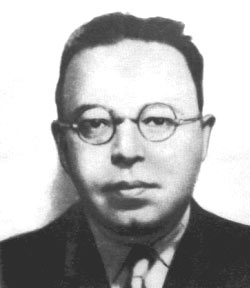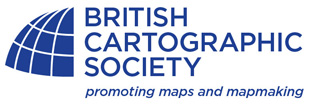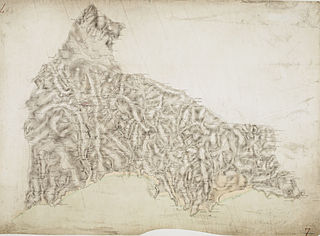
Cartography is the study and practice of making and using maps. Combining science, aesthetics and technique, cartography builds on the premise that reality can be modeled in ways that communicate spatial information effectively.

A map is a symbolic depiction emphasizing relationships between elements of some space, such as objects, regions, or themes.

In modern mapping, a topographic map or topographic sheet is a type of map characterized by large-scale detail and quantitative representation of relief features, usually using contour lines, but historically using a variety of methods. Traditional definitions require a topographic map to show both natural and artificial features. A topographic survey is typically based upon a systematic observation and published as a map series, made up of two or more map sheets that combine to form the whole map. A topographic map series uses a common specification that includes the range of cartographic symbols employed, as well as a standard geodetic framework that defines the map projection, coordinate system, ellipsoid and geodetic datum. Official topographic maps also adopt a national grid referencing system.

Manó Kogutowicz or Emanuel Thomas Kogutovicz was a Polish-Hungarian cartographer, and the founder of the Hungarian Geographical Institute.
The history of cartography refers to the development and consequences of cartography, or mapmaking technology, throughout human history. Maps have been one of the most important human inventions for millennia, allowing humans to explain and navigate their way through the world.
The following outline is provided as an overview of and topical guide to cartography:

Alexander Radó, also: Alex, Alexander Radolfi, Sándor Kálmán Reich or Alexander Rado, was a Hungarian cartographer who later became a Soviet military intelligence-agent in World War II. Radó was also a member of the resistance to Nazi Germany, devoted to the service of the so-called Red Orchestra, the Soviet espionage and spy network in Western Europe between 1933 and 1945. Within the Red Orchestra he headed the Switzerland-based Red Three group, one of the most efficient components of the Soviet intelligence network.

The International Cartographic Association (ICA), is an organization formed of national member organizations, to provide a forum for issues and techniques in cartography and geographic information science (GIScience). ICA was founded on June 9, 1959, in Bern, Switzerland. The first General Assembly was held in Paris in 1961. The mission of the International Cartographic Association is to promote the disciplines and professions of cartography and GIScience in an international context. To achieve these aims, the ICA works with national and international governmental and commercial bodies, and with other international scientific societies.
Critical cartography is a set of mapping practices and methods of analysis grounded in critical theory, specifically the thesis that maps reflect and perpetuate relations of power, typically in favor of a society's dominant group. Critical cartographers aim to reveal the “‘hidden agendas of cartography’ as tools of socio-spatial power”. While the term "critical cartography" often refers to a body of theoretical literature, critical cartographers also call for practical applications of critical cartographic theory, such as counter-mapping, participatory mapping, and neogeography.

The British Cartographic Society (BCS) is an association of individuals and organisations dedicated to exploring and developing the world of maps. It is a registered charity. Membership includes national mapping agencies, publishers, designers, academics, researchers, map curators, individual cartographers, GIS specialists and ordinary members of the public with an interest in maps.
Planetary cartography, or cartography of extraterrestrial objects (CEO), is the cartography of solid objects outside of the Earth. Planetary maps can show any spatially mapped characteristic for extraterrestrial surfaces. Some well-known examples of these maps have been produced by the USGS, such as the latest Geologic Map of Mars, but many others are published in specialized scientific journals.

A national mapping agency is an organisation, usually publicly owned, that produces topographic maps and geographic information of a country. Some national mapping agencies also deal with cadastral matters.
Cartographic propaganda is a map created with the goal of achieving a result similar to traditional propaganda. The map can be outright falsified, or created using subjectivity with the goal of persuasion. The idea that maps are subjective is not new; cartographers refer to maps as a human-subjective product and some view cartography as an "industry, which packages and markets spatial knowledge" or as a communicative device distorted by human subjectivity. However, cartographic propaganda is widely successful because maps are often presented as a miniature model of reality, and it is a rare occurrence that a map is referred to as a distorted model, which sometimes can "lie" and contain items that are completely different from reality. Because the word propaganda has become a pejorative, it has been suggested that mapmaking of this kind should be described as "persuasive cartography", defined as maps intended primarily to influence opinions or beliefs – to send a message – rather than to communicate geographic information.
Cynthia A. Brewer is an American cartographer, author, and professor of geography at Pennsylvania State University. Brewer's specialism relates to visibility and color theory in cartography and, in 2023, she was awarded the International Cartographic Society's highest honor, the Carl Mannerfelt Gold Medal, for her distinguished contribution to the field.

The Cartographic Journal is an established peer-reviewed academic journal of record and comment that is published on behalf of the British Cartographic Society by Taylor & Francis. An official journal of the International Cartographic Association (ICA), it contains authoritative papers on all aspects of cartography: the art, science and technology of presenting, communicating and analysing spatial relationships by means of maps and other geographical representations of the Earth's surface. This includes coverage of related technologies where appropriate, for example, remote sensing and geographical information systems (GIS), the internet, satellite navigation and positioning systems, laser scanning, and terrain modelling. The Journal also publishes articles on social, political and historical aspects of cartography. Occasionally, Special Issues are published that focus on a particular research theme.
Geographer Royal is a Scottish honorific appointment. The holder of the position originally was intended to give geographic and mapping advice to the sovereign. In 1682, King Charles II appointed the first Geographer Royal, Robert Sibbald.

Ferdinand Jan Ormeling Jr. is a Dutch cartographer. He is the son of the well known cartographer Ferdinand Jan Ormeling Sr.

Ferdinand Jan Ormeling Sr. was a Dutch geographer and cartographer. He achieved national and international recognition for his scientific, didactic and organizational skills.
Christopher Board OBE is a British cartographer and academic. Among his special interests are the histories of cartography and of military mapping in colonial South Africa.
Cartactual was a cartographic reference journal, published by Hungarian publisher Cartographia, starting in September 1965 under the editorship of Alexander Radó. It produced a collection of maps that illustrated changes to geographic features such as roads, railways, ferry routes, ports, and international and sub-national boundaries in various countries of the world, that were cited in its sister-journal Geodézia és Kartográfia.












